Dabka Embroidery of Pakistan
Dabka Embroidery of
Pakistan: A Legacy of Craft & Culture
Dabka Embroidery of Pakistan is one of the most striking and refined textile traditions from Pakistan. Constructed with shimmering metallic coils and brought to life through skillful needlework, dabka creates a raised, three-dimensional effect that instantly transforms any garment into a symbol of celebration. For generations, brides, grooms, and families have chosen dabka to honor their most cherished moments - a reflection of beauty, festivity, status, and cultural pride. It is a craft that elevates not only outfits, but also the significance of occasions where heritage and elegance matter most.
 Bridal Couture with Dabka
Bridal Couture with Dabka Close-up of dabka
Close-up of dabka Bridal Couture with dabka
Bridal Couture with dabka Mughal Roots & History
The history of dabka embroidery can be traced to the sophistication of the Mughal Empire, where elaborate gold and silver threadwork adorned royal outfits, carpets, and ceremonial décor. The Mughals introduced refined aesthetics and a love for artistic grandeur to the region, inspiring textile techniques that showcased prestige and luxury. The art eventually became intertwined with local identity, valued as a treasure of celebration and heritage.
As this decorative tradition spread across the subcontinent, it evolved into the cultural identity of regions that now form Pakistan. Traditional embroidery communities took the craft to new heights, integrating motifs inspired by flora, domes, minarets, and the poetry of Islamic art. Cities including Lahore, Hyderabad, Karachi, Bahawalpur, and Multan became creative centers where the craft continues to flourish. For these communities, dabka is not only an art -it is a legacy passed down like a family inheritance, respected for its historic symbolism.
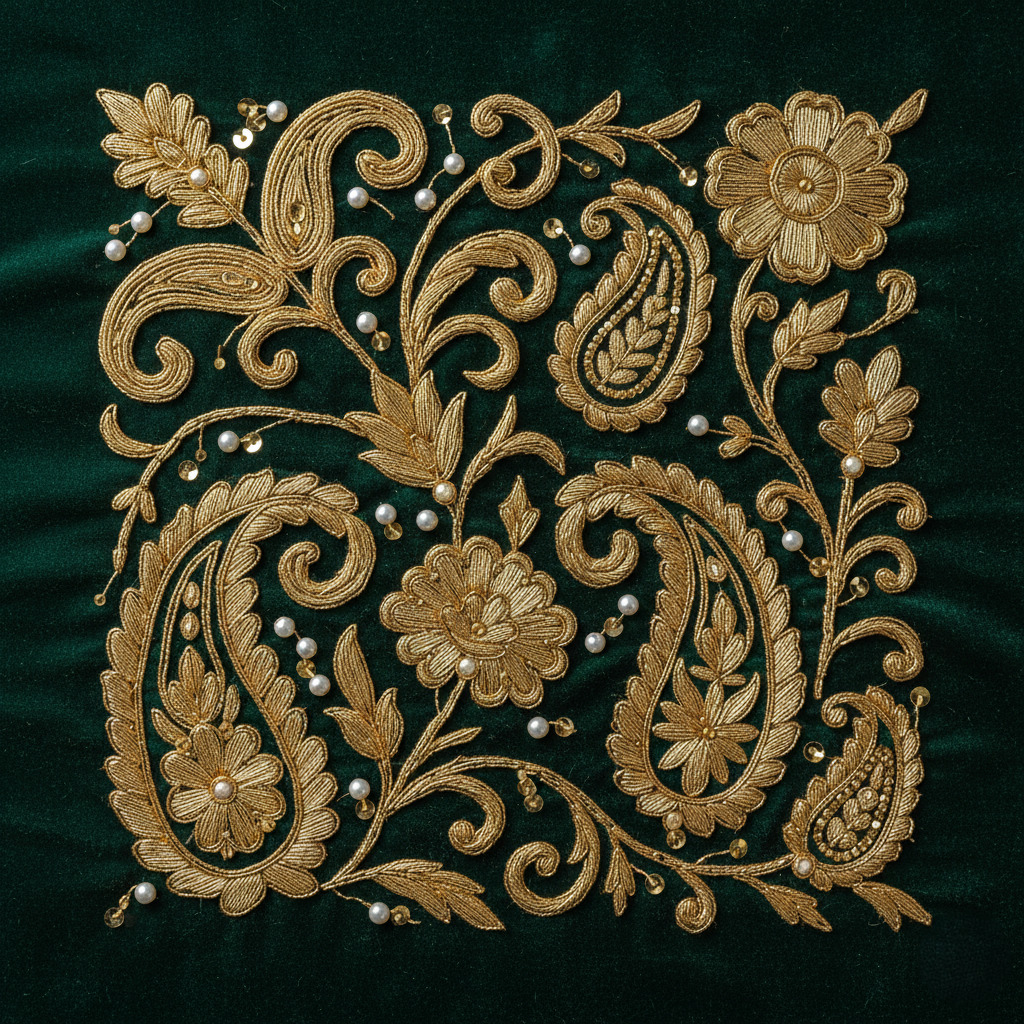 Motif Collage
Motif Collage Mughal Palace Inspiration
Mughal Palace Inspiration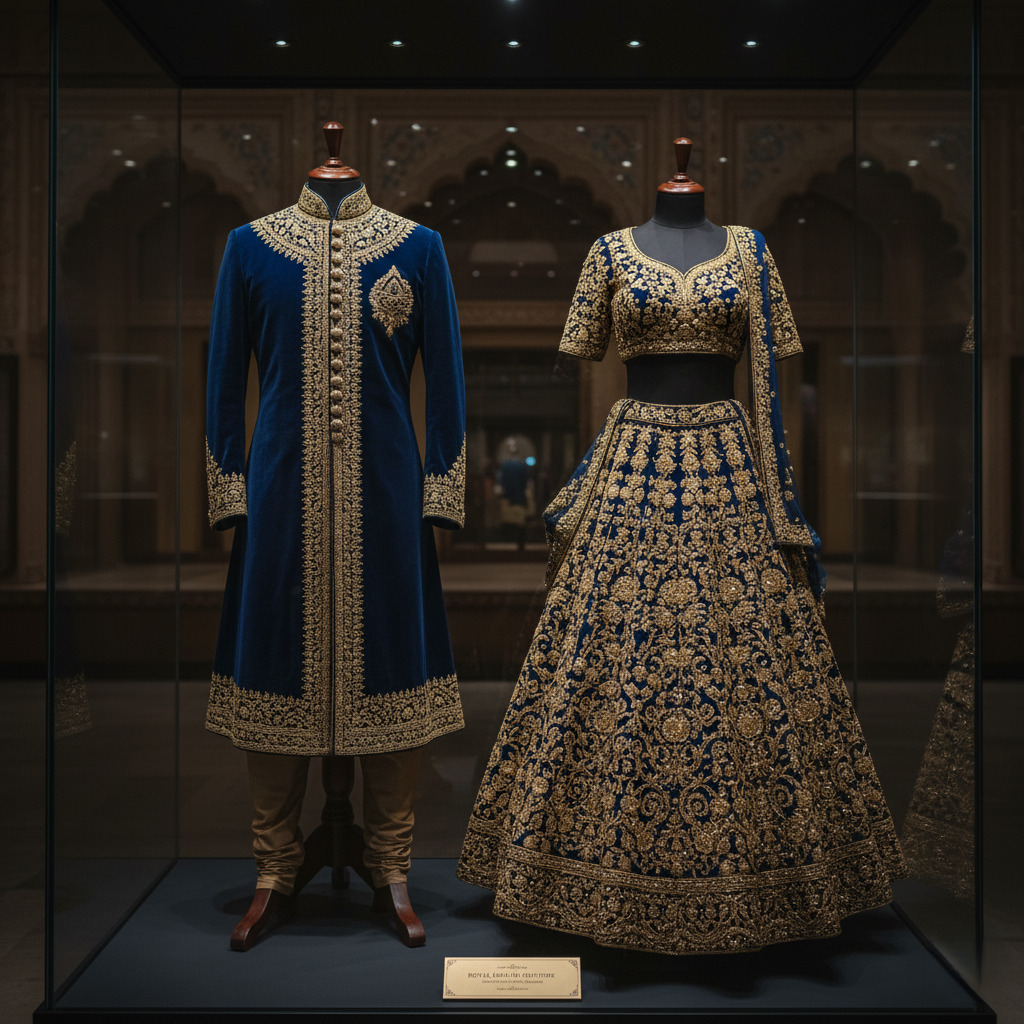 Royal Garment Display
Royal Garment DisplayMaking Process: Tools, Technique & Skill
Crafting dabka requires remarkable dedication and discipline. Artisans typically work on large wooden frames called addas, where fabric is stretched tightly to allow precise needlework. The stitching process is slow, rhythmic, and deeply skilled. Entire families may sit together creating embroidery, transforming creativity into livelihood.
Here’s how the magic is created:
- Designing the Pattern – Designers develop patterns and style while artists and artisans in the field trace these designs/motifs onto fabric using chalk or ink, carefully balancing shapes, symmetry, and flow.
- Metal Coil 'Thread' Preparation – Copper or silver wires are flattened, rolled into coils, and then cut into tiny curved pieces called dabka.
- The Aari Needle Technique – A hook-shaped needle inserts each tiny metal coil into the fabric, one piece at a time, forming a textured surface.
- Detailing with Complementary Elements – Stones, sequins, pearls, beads, and silk threads provide highlights, bringing sparkle and dimension to each motif.
This is painstaking work - a heavily embellished bridal outfit can require skilled hands for hundreds of hours. Working long hours with intense focus, these artisans are the true guardians of this cultural treasure.
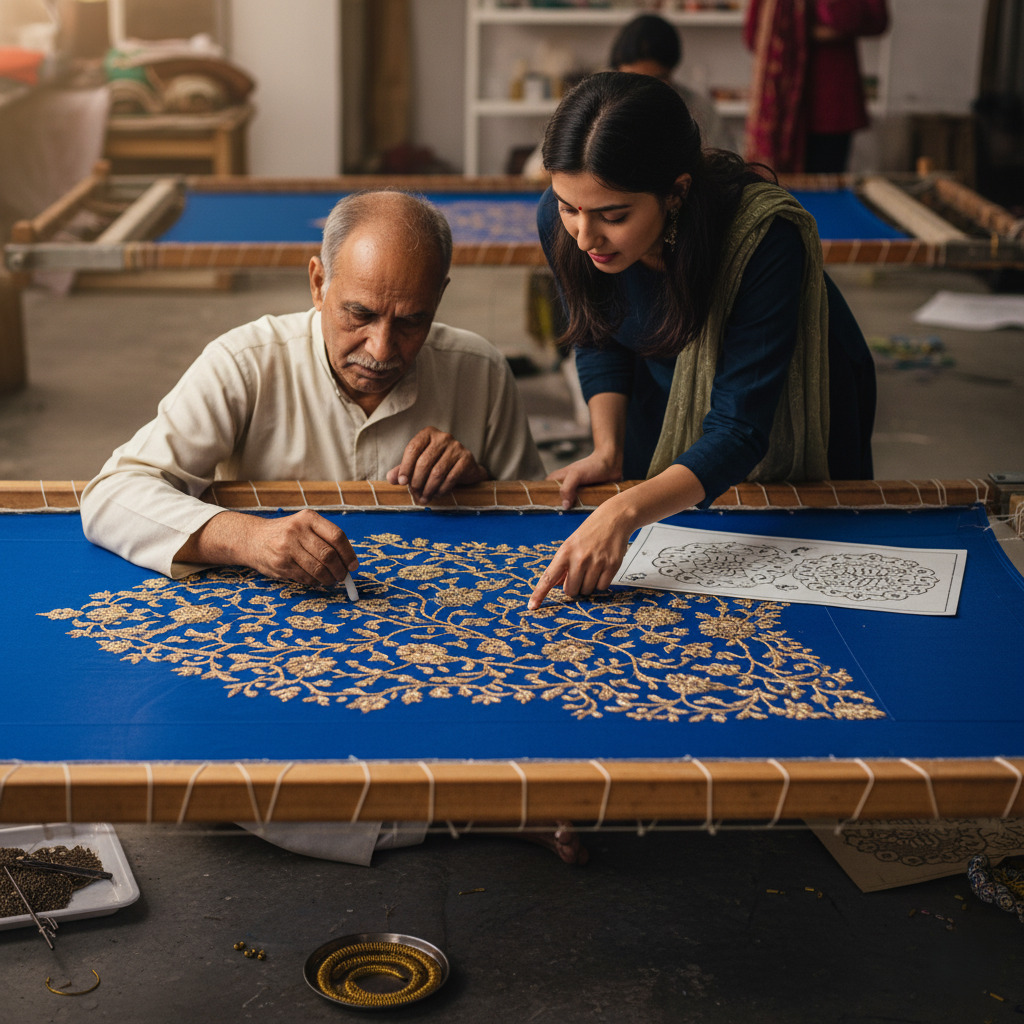 Adda Frame Teamwork
Adda Frame Teamwork Artisan at Work
Artisan at Work Macro of Coil Stitch
Macro of Coil StitchArtistic Styles and
Signature Designs
Dabka stands out because of its luxurious depth and light-catching movement. It pairs beautifully with fabrics like velvet, silk, chiffon, net, and organza - each adding a different dimension to the final look. Designers choose fabrics that will best support the weight and visibility of the metal coils.
Popular artistic themes include vibrant florals, blooming roses, peacocks, swirling paisleys, mandala-inspired geometry, and motifs based on Mughal architecture. Some designs are subtle and delicate, while others create bold, dramatic expressions intended for royal celebrations. Metallic tones like antique gold, rose gold, silver, and copper often contrast against rich traditional colors such as emerald, crimson, and midnight blue, making each garment a statement of grace.
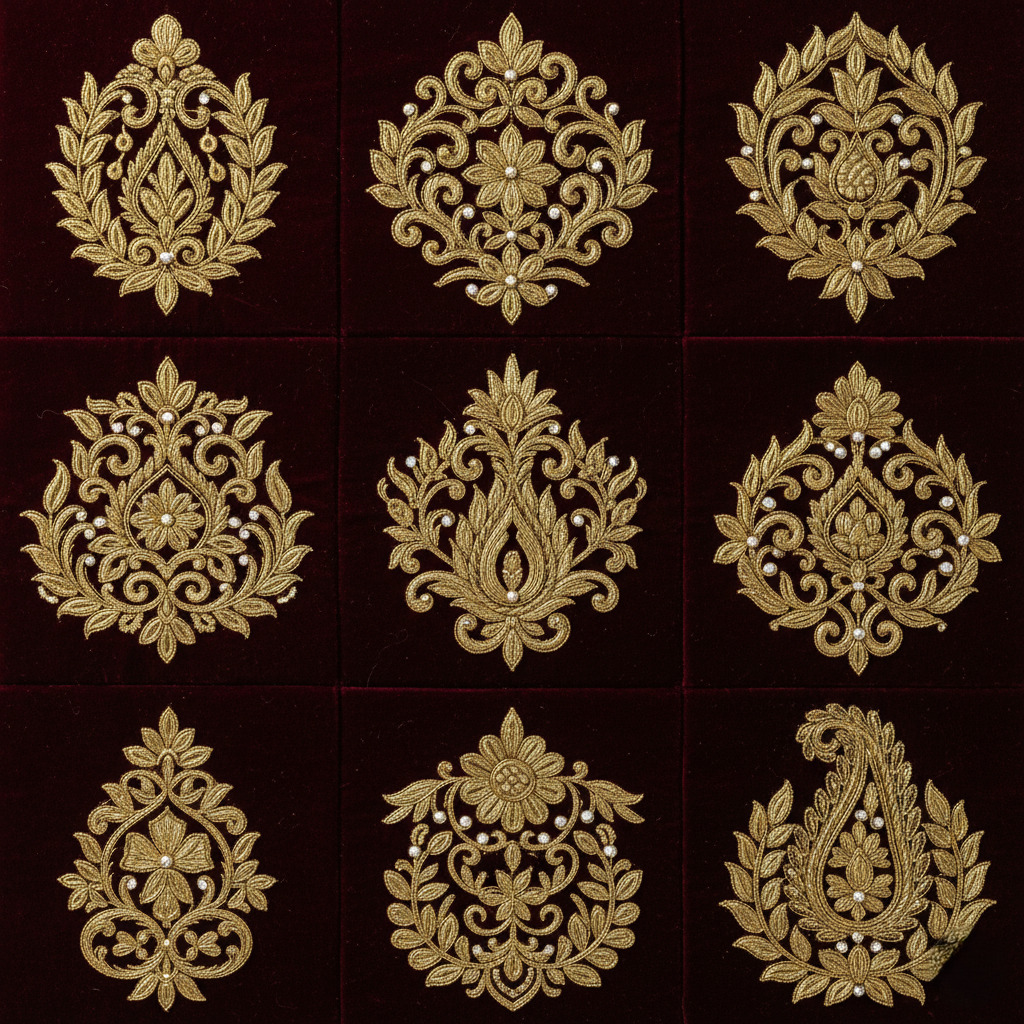 Gallery of Motifs
Gallery of Motifs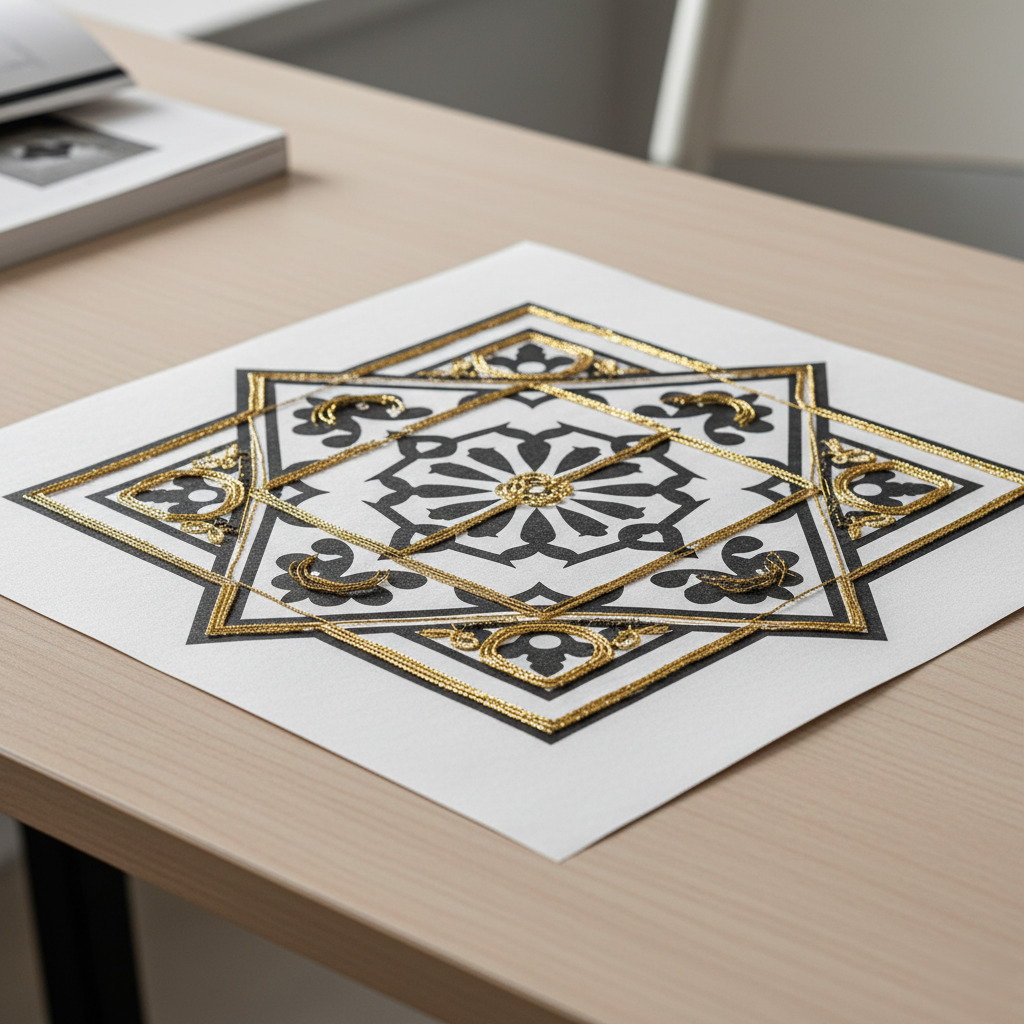 Mughal Patterns Modernized
Mughal Patterns Modernized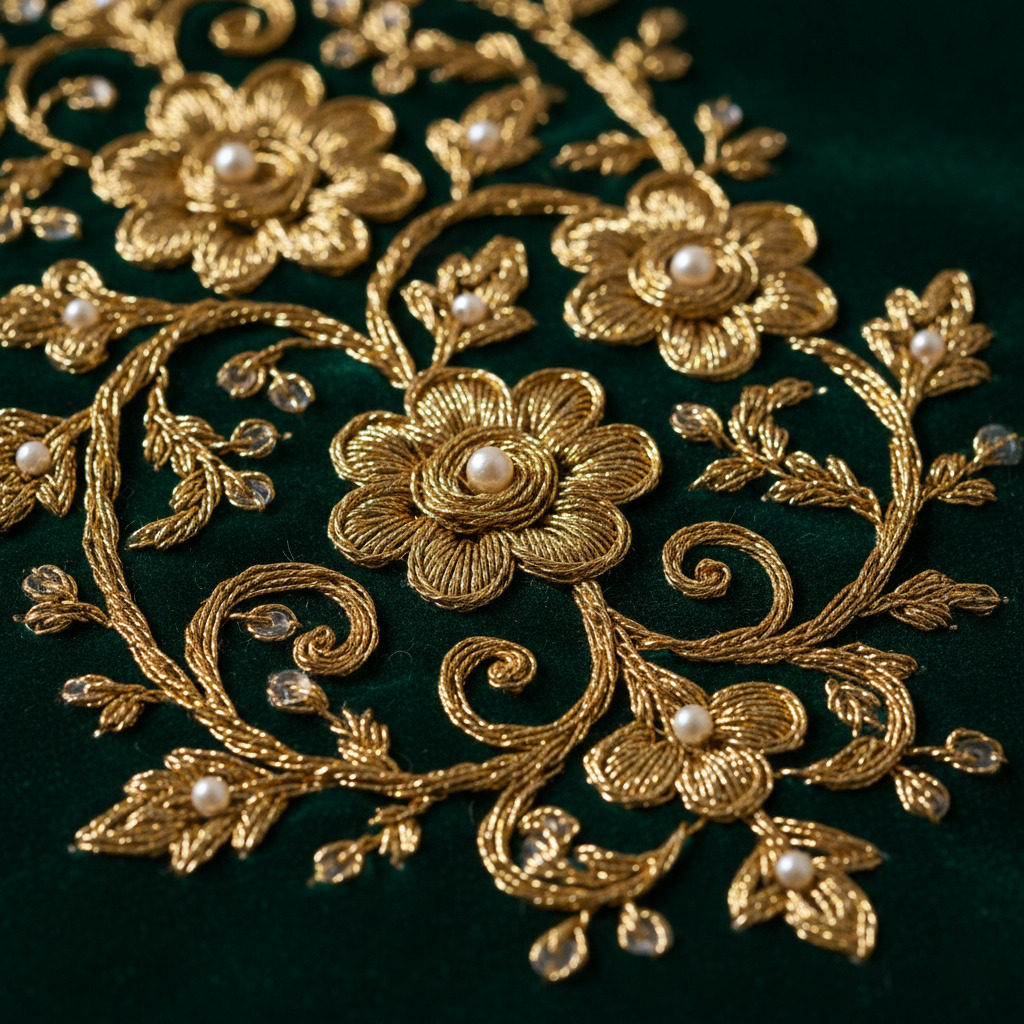 Royal Color Palette-Close-Up
Royal Color Palette-Close-UpFashion of Pakistan: Dabka
in Contemporary Design
Although deeply connected to tradition, dabka continues to evolve. Designers blend classic handwork with modern silhouettes, making this embroidery relevant for today’s global fashion scene. Beyond customary bridal wear like lehengas, ghararas, sherwanis, and dupattas, dabka embellishes gowns, jackets, shawls, handbags, footwear, and bridal accessories.
On runways and in bridal markets worldwide, fashion from Pakistan has earned admiration for its intricate craftsmanship. Dabka plays a major role in that recognition, showing how traditional art can shine confidently in a modern world.
 Runway Look-Modern
Runway Look-Modern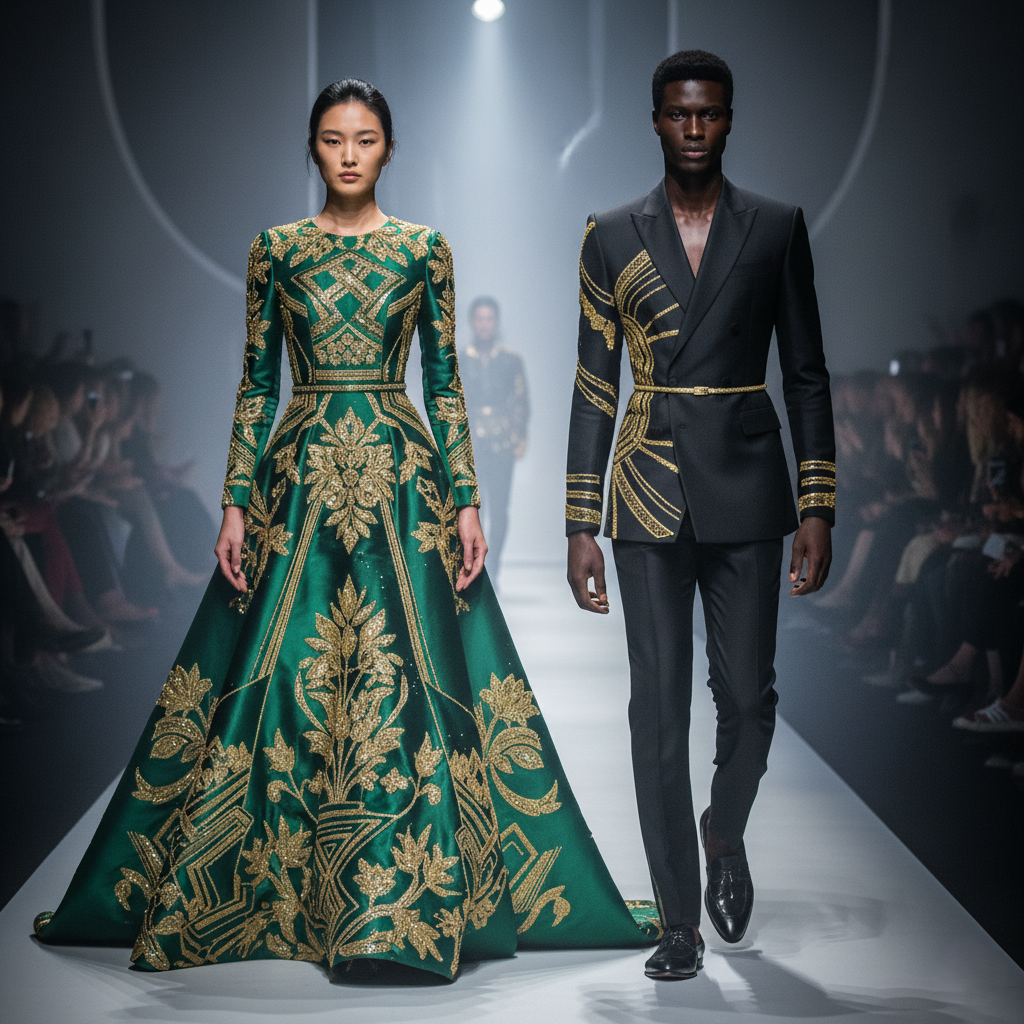 Global Fashion
Global Fashion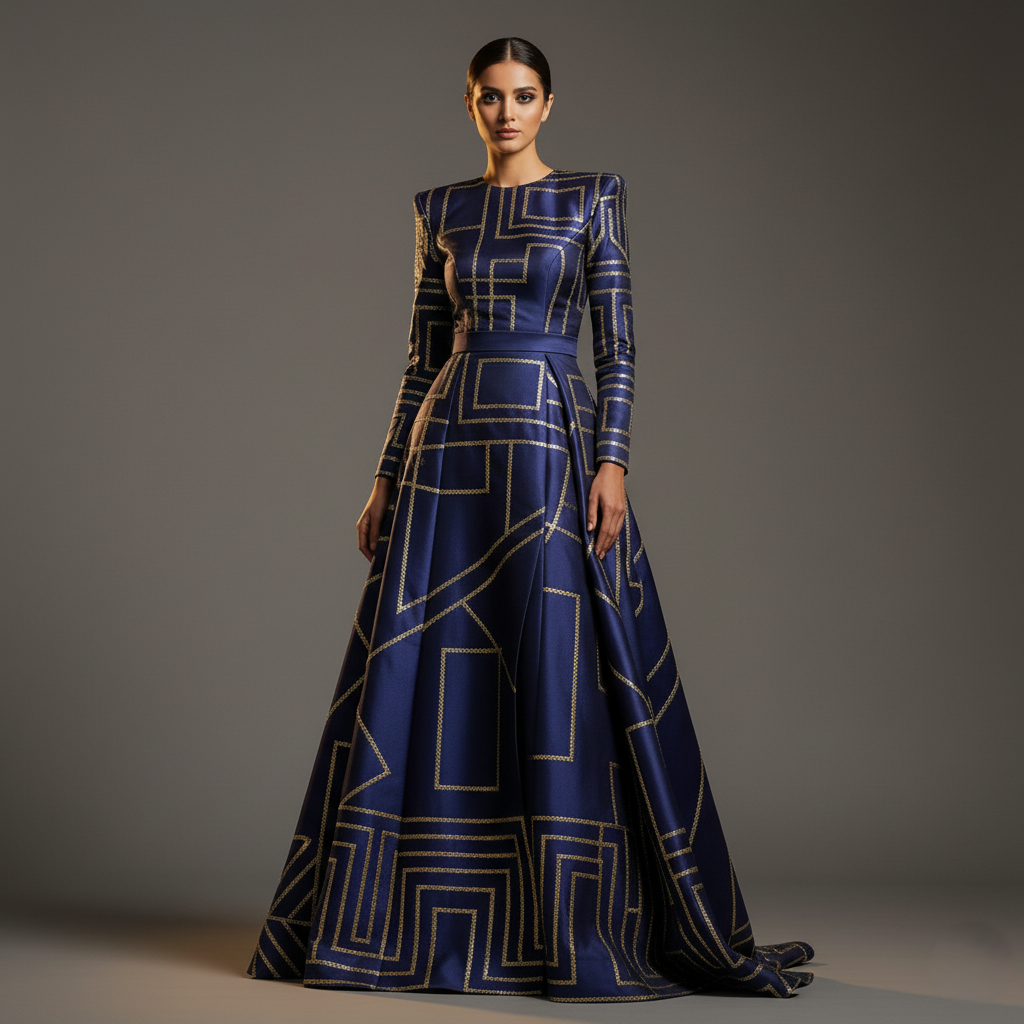 Contemporary Couture-Model
Contemporary Couture-ModelCultural Value and Artisan
Communities
Dabka embroidery contributes greatly to the artisan economy in Pakistan. Many households rely on this craft as their primary source of income, preserving skills that have been practiced for centuries. The work encourages family collaboration, allowing creativity and culture to thrive within local communities.
However, challenges persist:
- Cheaper machine-made embellishments threaten the value of handcrafted work
- Artisan wages do not always match the level of skill and time invested
- Younger generations often leave the craft, seeking more stable careers
Celebrating and supporting authentic hand embroidery not only uplifts artisans but also helps preserve a heritage that cannot be replaced by machines.
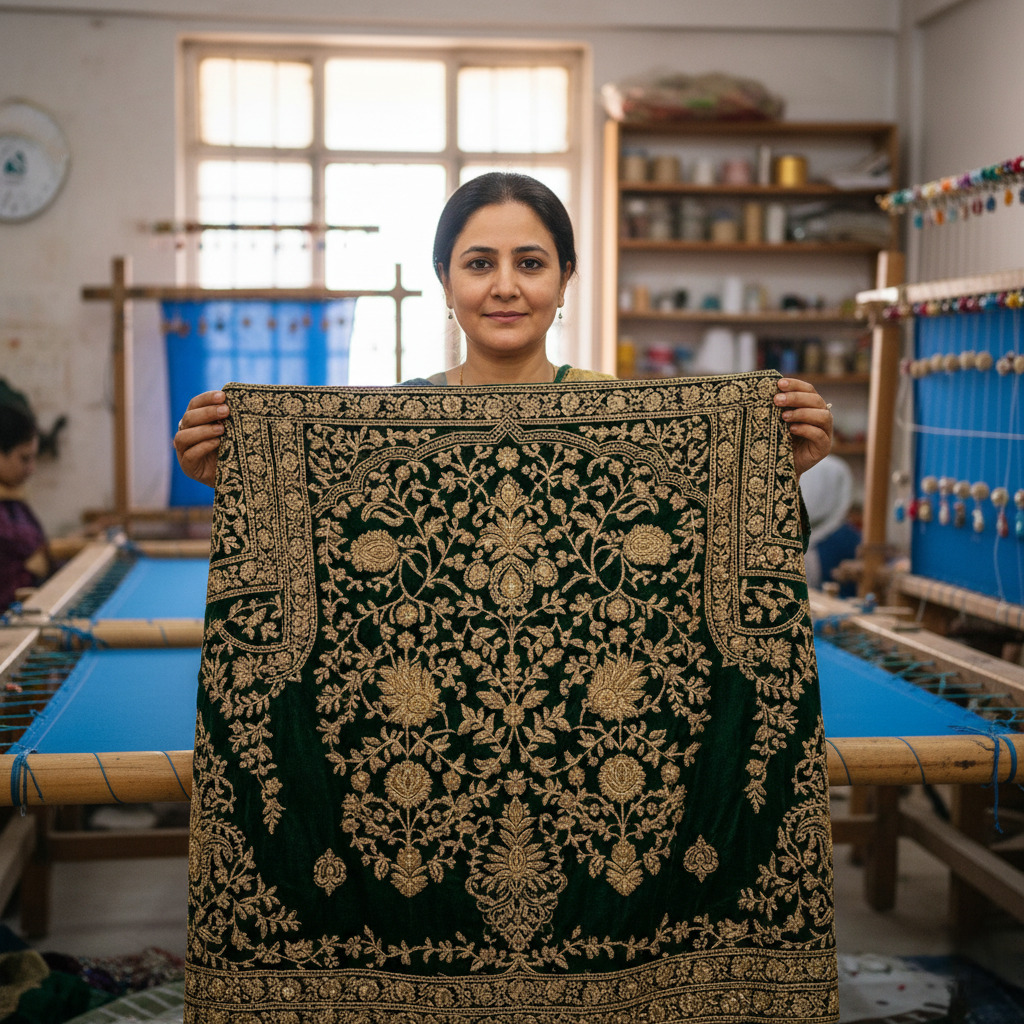 Artisan Portrayed with work
Artisan Portrayed with work Community Workspace
Community Workspace Design-Sketch-to-fabric
Design-Sketch-to-fabricPreserving a Timeless Art
There is growing appreciation for sustainable fashion and meaningful craftsmanship, making the future of dabka promising. Cultural organizations, ethical fashion brands, and digital marketplaces offer new opportunities for artisans to showcase their work globally. The more people learn about the story behind dabka, the more they admire it - and the artisans who keep it alive.
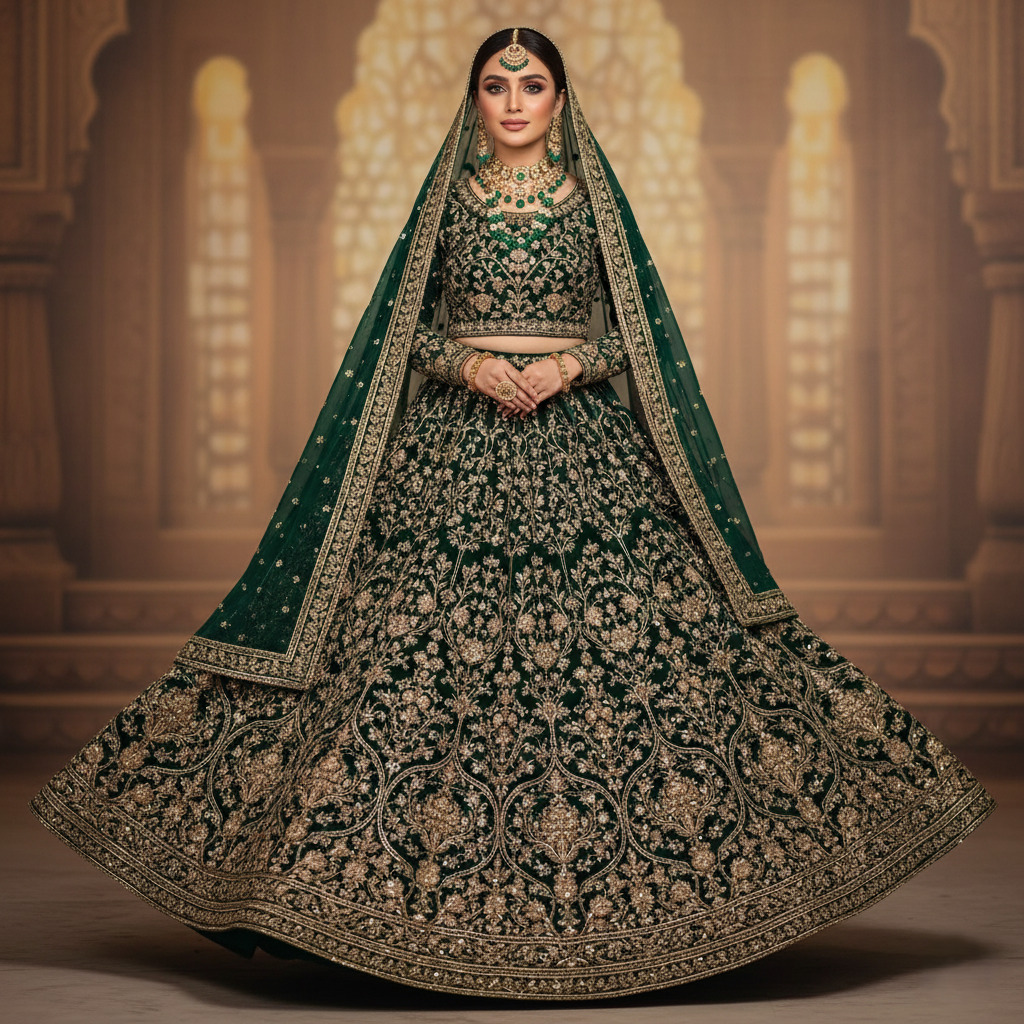


A Radiant Reflection of Pakistan’s Heritage
Dabka embroidery is far more than a decorative technique—it is a celebration of creativity, patience, and cultural pride. Each glittering stitch carries history and skill passed down through generations. Whether worn at a wedding, showcased on a runway, or preserved as a family heirloom, dabka embodies the timeless grace of Pakistan’s artistic traditions. Its enduring sparkle continues to capture hearts, making it a cherished treasure in the world of fashion.
Dabka Embroidery of Pakistan is heritage stitched with metal - alive with culture, history, and devotion. It honors the past while adorning the present, making every moment it touches brighter and more memorable.
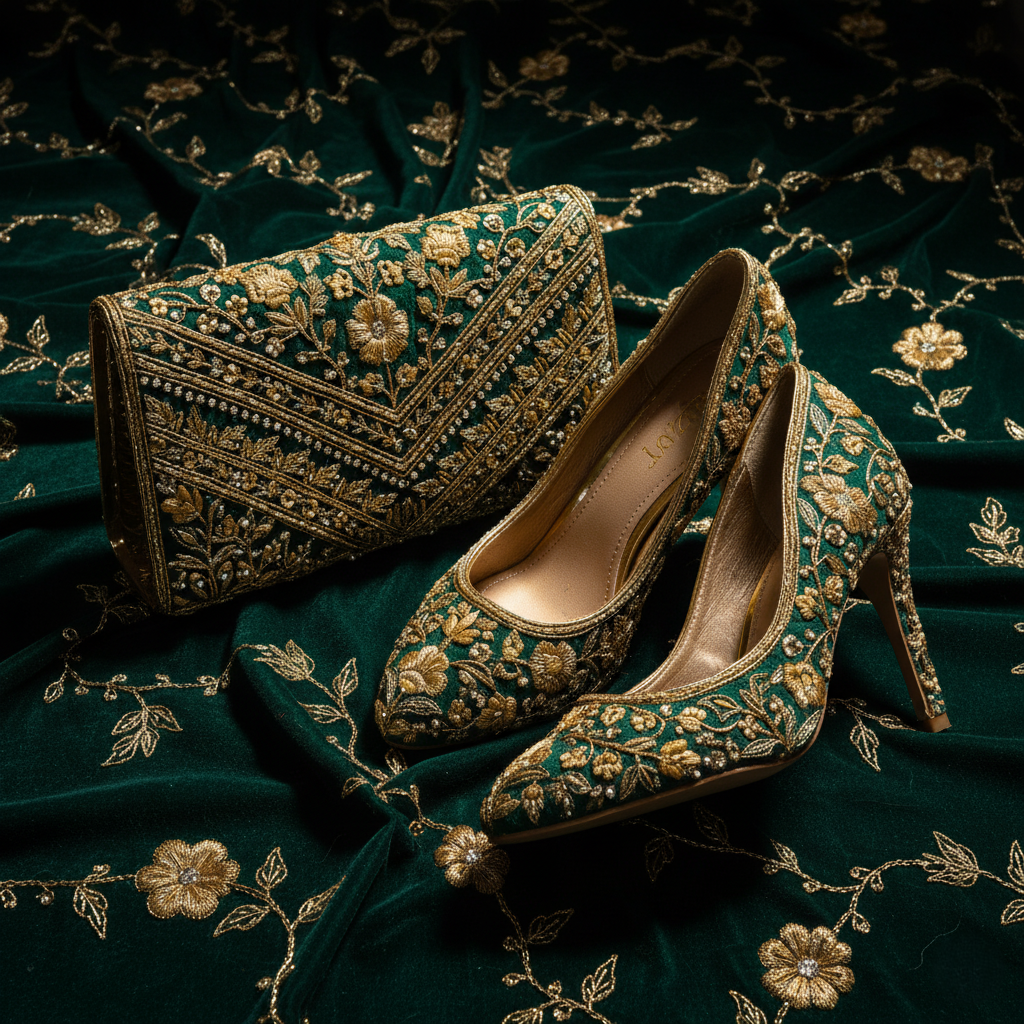 Fashion Accessories with Dabka
Fashion Accessories with Dabka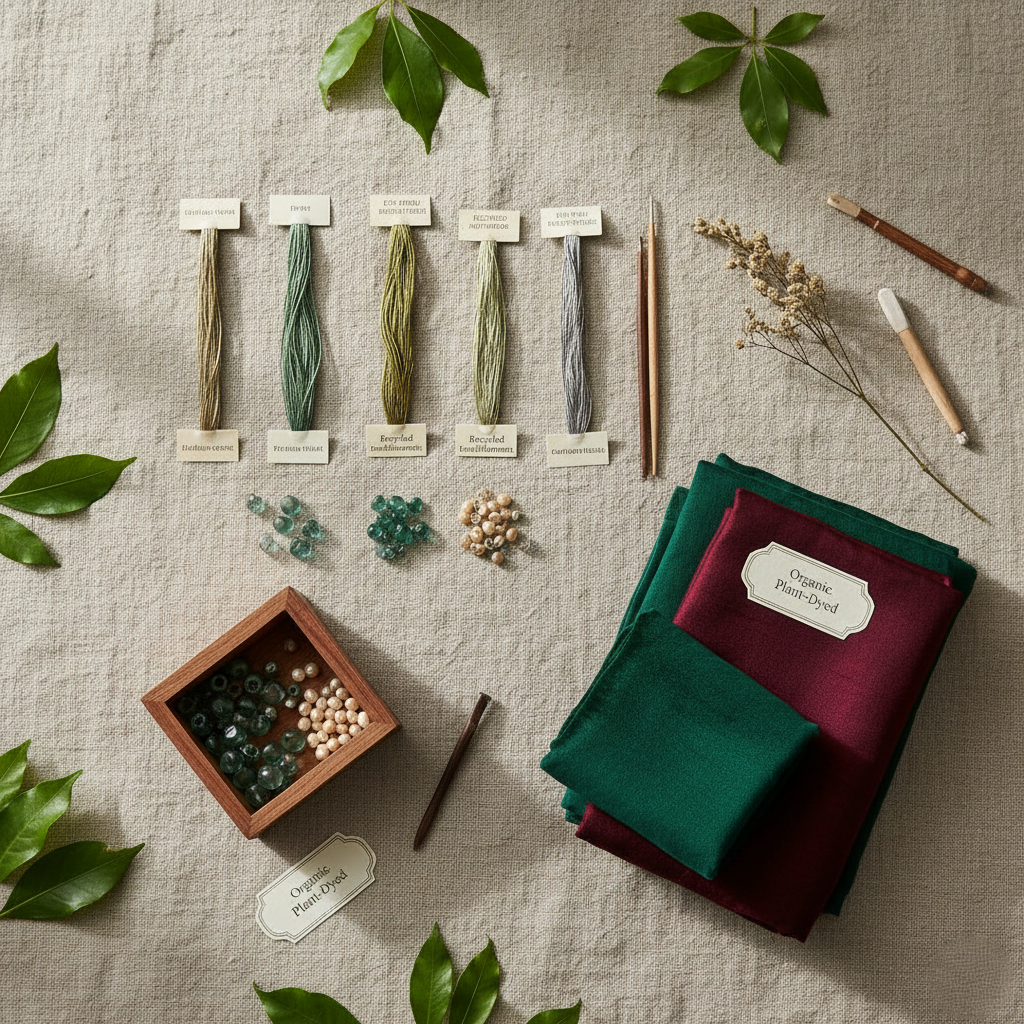 Sustainable Materials
Sustainable Materials Tools and Materials used for dabka embroidery
Tools and Materials used for dabka embroidery- Home
- Products and Trades
- Dabka


